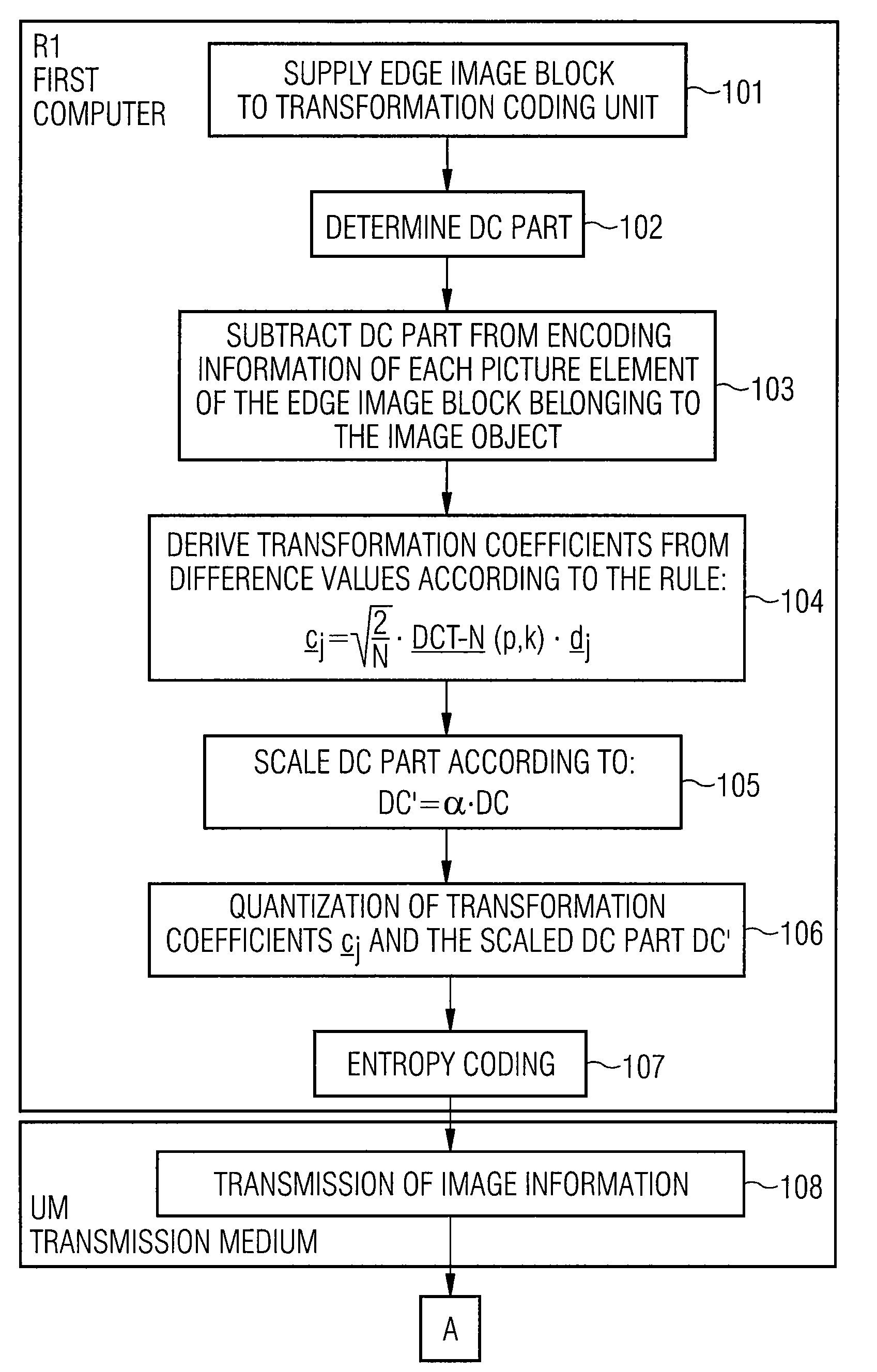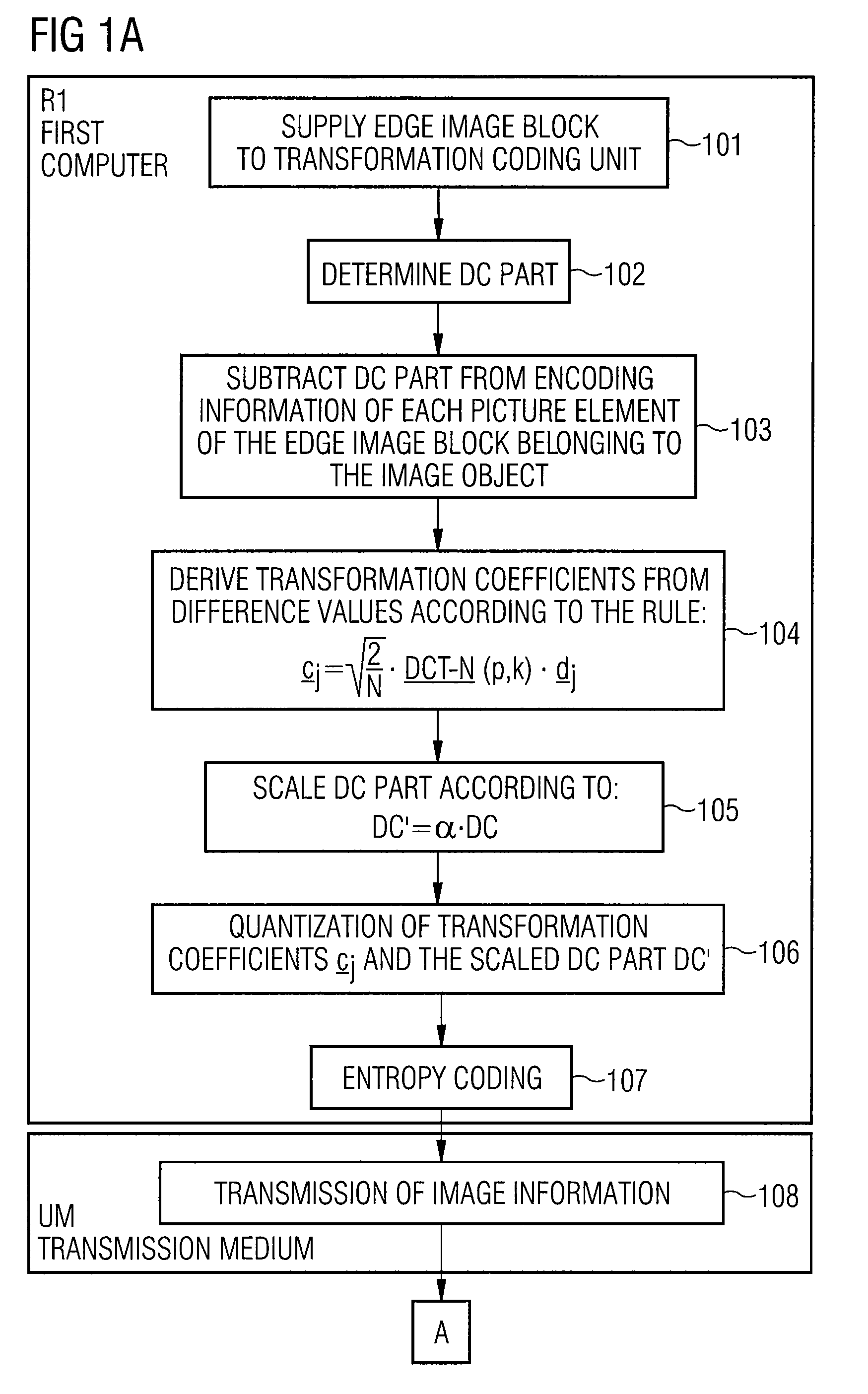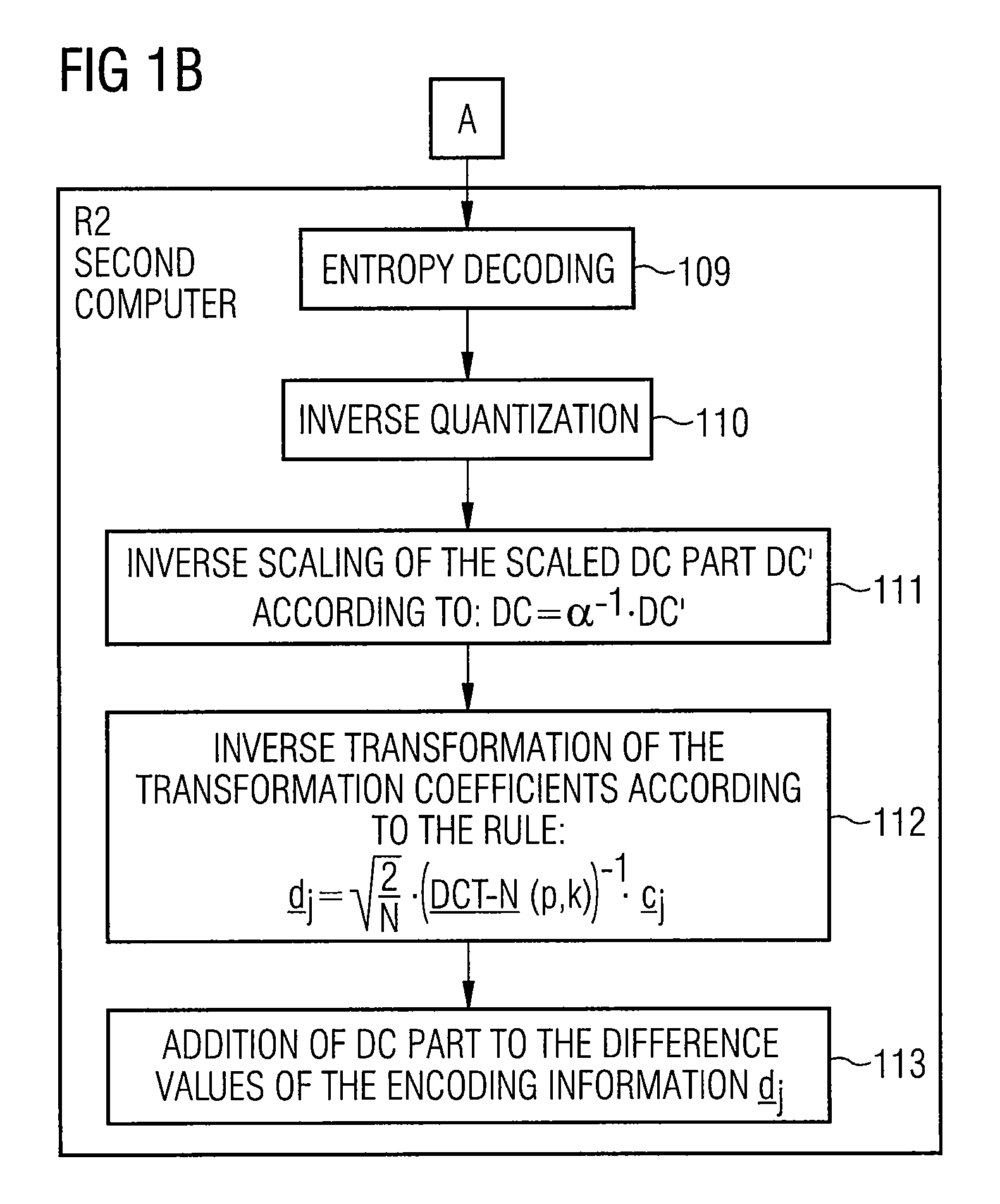Method and device for encoding and decoding a digitized image
a technology of digitized images and methods, applied in the field of encoding and decoding of video data streams, can solve the problems of not being able to represent the resulting transformation coefficients (spectral coefficients), and achieve the effect of substantially enhancing the efficiency of encoding
- Summary
- Abstract
- Description
- Claims
- Application Information
AI Technical Summary
Benefits of technology
Problems solved by technology
Method used
Image
Examples
Embodiment Construction
[0064]FIG. 2 shows a camera K with which a sequence of images B is registered and supplied to a first computer R1 via a connection V.
[0065]In the first computer R1, the images of the sequence of images B are digitized and encoded according to the method of the future MPEG4 Standard described in the above-referenced ISO publication.
[0066]The first computer R1 is connected to a second computer R2 via a transmission medium UM, such as a cable or a radio transmission link, for example. The image data encoded by the first computer R1 is transmitted to the second computer R2 via the transmission medium UM and is decoded at the second computer R2.
[0067]The first computer R1 and the second computer R2 are respectively comprised of a memory SP and a computing unit RE or processor that are connected to one another via a bus BU. The computing unit RE of the first computer R1 decodes the method steps explained below for encoding the digitalized images are implemented. The computing RE of the se...
PUM
 Login to View More
Login to View More Abstract
Description
Claims
Application Information
 Login to View More
Login to View More - R&D
- Intellectual Property
- Life Sciences
- Materials
- Tech Scout
- Unparalleled Data Quality
- Higher Quality Content
- 60% Fewer Hallucinations
Browse by: Latest US Patents, China's latest patents, Technical Efficacy Thesaurus, Application Domain, Technology Topic, Popular Technical Reports.
© 2025 PatSnap. All rights reserved.Legal|Privacy policy|Modern Slavery Act Transparency Statement|Sitemap|About US| Contact US: help@patsnap.com



